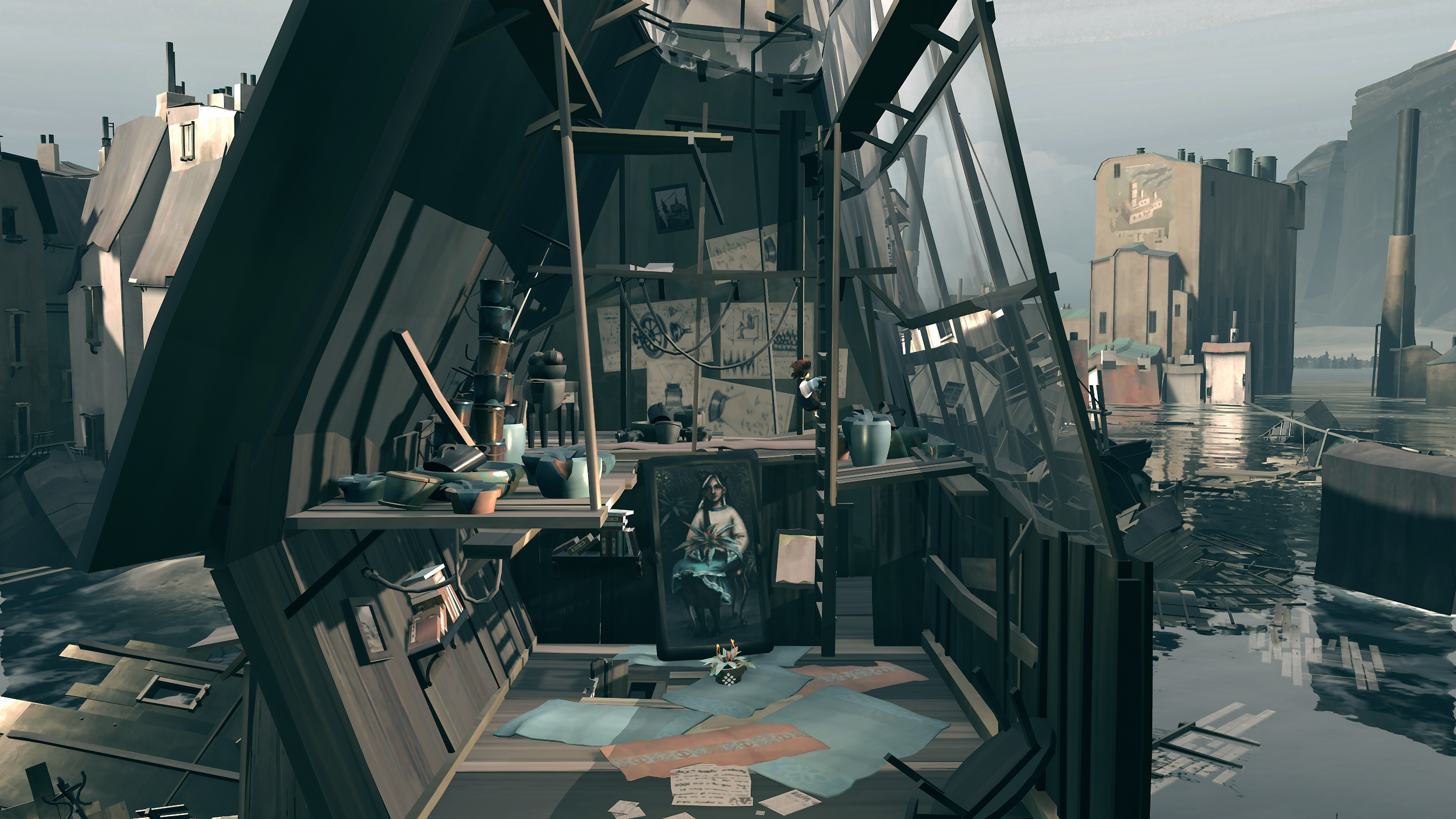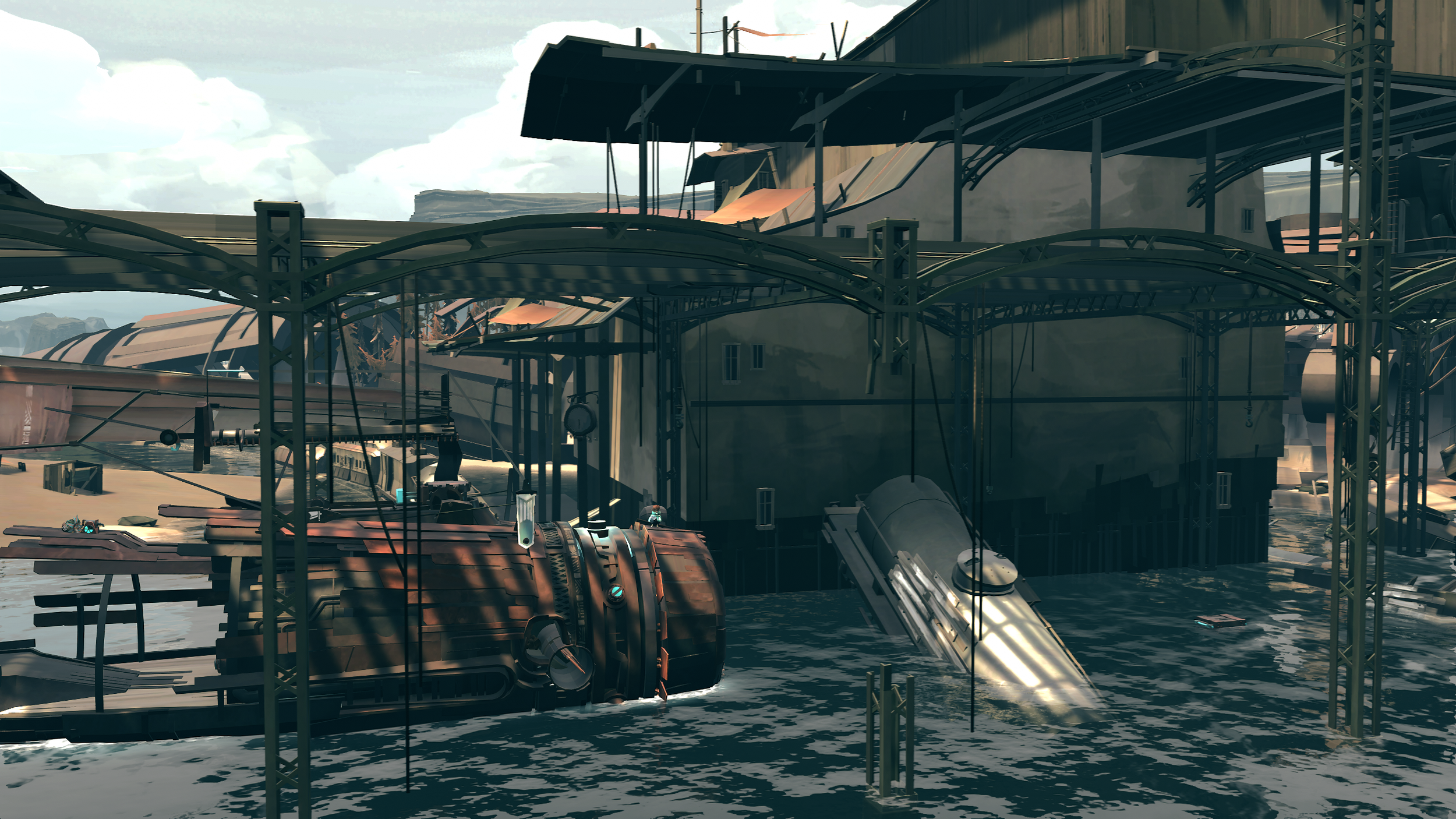It is within the realms of indie gaming that we see true gaming evolution, as they say, innovation is the bi-product of necessity. With so much of the gaming media already saturated, new studios need to stand out to make waves and grab the mercurial attention of passing gamers.
A few years ago I saw a gameplay clip of FAR: Lone Sails on Twitter, a new developer called Don Schmocker was trying to drum up support for his game. I took one look at the land ship rolling across my screen and knew I had to give it a try. And so I did. In the few hours that passed, I experienced so many emotions as I wrestled with the task of moving my land ship to its final destination. The closing few seconds of that game had me enthralled and with a final, crucial sound: it ended. I was over the moon then, to discover that the developer has expanded the team at Okomotive and set to work on a sequel.
So there are a few things we need to get on the table before we continue. The first is that I would highly recommend you play the first game, FAR: Lone Sails before trying this one. I can’t say any more than that, but it will become clear when you have experienced both games why I suggest this. Secondly, I would also urge you to take my recommendation for this game at face value and just go and play these two games. My review will only cover content from the first half of the game but exploration is such a key element here: I think it is better to go in with as little as possible. Granted they are both short, but I feel the price point reflects this well. In addition, they are also available on Gamepass and so if you have a subscription this is an even easier decision to make.
Ship Shape
The game opens with very little by way of exposition, even less than the prior game now that I think about it. You play as a young boy setting sail on a fantastical ship that looks anything but seaworthy. The bow is blunt like a giant baseball bat and seems to exist in spite of itself. Yet once you raise the sails it starts to cut through the waves like a hot knife through butter. There is no quest summary or to-do list here, not even a spoken word to give you the skinny on your task at hand. Instead, the game presents a path to the player with colour and just a single direction. Anything with a turquoise coating is interactive, from buttons, hooks, switches and pressure pads. It’s a game that reminds me of those interactive experiments at the science museums, you learn by simply doing.
Very soon you will have raised the mast of your vessel and pulled the sails into position. There is no steering as such, it is just a case of positioning the mast to best take advantage of the wind billowing in your eager sails. Once you hit the sweet spot, the small flag indicating wind speed and direction will be within (you guessed it) the turquoise bar. Occasionally you will need to drop the mast or pull the sails flush with the ship in order to avoid damage from passing structures, but sadly these occasions happen less often than the last game. If you do manage to knacker your ship the affected parts will start to smoulder, but these can be fixed with the plentiful repair units you come across.
Like the prior game, your ship will gain new functions as you make your way through various deserted factories. One retrofit gives you the ability to propel the ship forward powered by an incinerator that runs of anything you can find. With the help of a short-range radar system, you can see if items are passing underneath your vessel and so you can dive into the drink to pick them up. Most of the objects you find are little more than rags and crates but I did form a bond with a plant I acquired at the start of the game. In good sailing weather, my botanical friend would be placed on the bow. In more precarious situations she would be stowed away in the engine room, I would not let my friend suffer the same fate as Wilson.
Stingray
Quite early on your ship gains the ability to sink below the surface of the ocean and effectively becomes a submersible. Using the onboard water pump (which can be used to cool the engines down) you couple this up to the ballast tanks to raise or lower your depth. Jumping between these controls, the speed throttle and everything else is one of this game's marmite movements: you will either love it or hate it. I am in the former category and found the convoluted controls all part of the experience of operating a ship like this.
As you sink deeper into the ocean there is a wonderful sense of foreboding, as sunlight fails to follow you and the darkness below engulfs you like a winter's night. There are some well-crafted obstacles that will require a little bit of lateral thinking. Sometimes you will need to use the ship's winch and other times there will be a more complicated solution. None of the game's puzzles stopped me for long and when you do discover how to progress the visual payoff is always worth it.
As you move inside the ship, like Lone Sails, you get a cross-section view that lets you navigate the various sections with ease. The clunky movement sometimes gets in the way but after a few minutes, you get used to this. Overall I love the interior design of the ship as it has a real personality to it. My only minor gripe is how the camera moves around. When you hold Q the view will pan back but for me, this could have done with being a bit farther away from the ship. I like the fact that when you stand on the bow your view shifts to a more forward-looking perspective. I wish the Q view did this but with a bit more range.
Last Man on Earth
I love the visual style in Changing Tides. It is set with the same world of the first game so they have not strayed too far from that design philosophy. A whole manner of landscapes will pass in the distance, peppered with the occasional animals but it is clear that people are long gone from this increasingly water-filled world. This feeling of loneliness and isolation is indeed part of the emotional texture that gives the world such a powerful atmosphere.
There is also a vast swath of industrial ruins where there was clearly once a bustling hive of activity. Now these many ports, warehouses and homes lie in a state of decay: twisted, broken and corroding into the land. While it is not explicitly mentioned, there is a warning within this game for the path our species currently treads. The artwork in general looks painted like watercolours in the distance and more like oils for the structures in the foreground. This style suits the theme of the game very well and it is a joy to make your way through the beautiful desolation.
Your character can run and jump to navigate this world but I can’t say I’m a big fan of the movement. I wish there was a little bit more momentum in the way you move around as jumping feels flat and heavy. Swimming is better and once you acquire your diving suit you can swim to any depths and even boost forward. It’s a pity that when you boost towards the surface you hit it and stop dead, as opposed to breaching like a dolphin. I have always loved games that allow underwater exploration and feel like a limited air supply always give this situation context. While I know the developers are not going for a full simulation here, on this one point I would have added the ability to drown.
Is it PC?
This game was played on an Intel i912900k, 32 GB of Ram and a 3080ti. There is very little that will push your system to its limits here and I would say most rigs will run it fine on the highest settings. If you do have to turn the graphics down that would be a shame as you then lose the wonderful waves and reflections that make you feel like the ocean is dancing around you. You can play using either keyboard or controller and both work perfectly fine, I ended up opting for the keyboard.
The music in Lone Sails was profoundly important to my experience with the game. It was an essential element that guided my thoughts along the path laid out in the world. The music in Changing Tides is also vital to that emotional pallet the game paints its story with. It can be a single keystroke on a piano or ditty to raise the mood after a traumatic event. Guitar, flute, violin plus many other instruments I am not qualified to recognise are here and I love it. I will say there seem to be fewer stand out tracks than the first game but I need another play through to make a definitive decision on that. For now, I will say the music in this game is amazing and it just wouldn’t work without it.
Conclusion
Like all wonderful journeys, I wish this one could last a little longer. However, as you reach the final few moments there is a wonderful realisation in store for you. Games have always struggled to escape one of the founding pillars on which they were built, that is the pressure for combat in some form or another being included. Yet games that manage to create fulfilling experiences through simple world design are fascinating to me. Yes, in Changing Tides there are no creatures to kill or bosses to best, it is purely about the journey of a solitary traveller and his ship. That might be the biggest reason for you to miss this game and that, of course, is fine. However, if like me you adore the act of travelling and seeking those unknown places just over the horizon, FAR: Changing Tides might just be the game you have been looking for.










